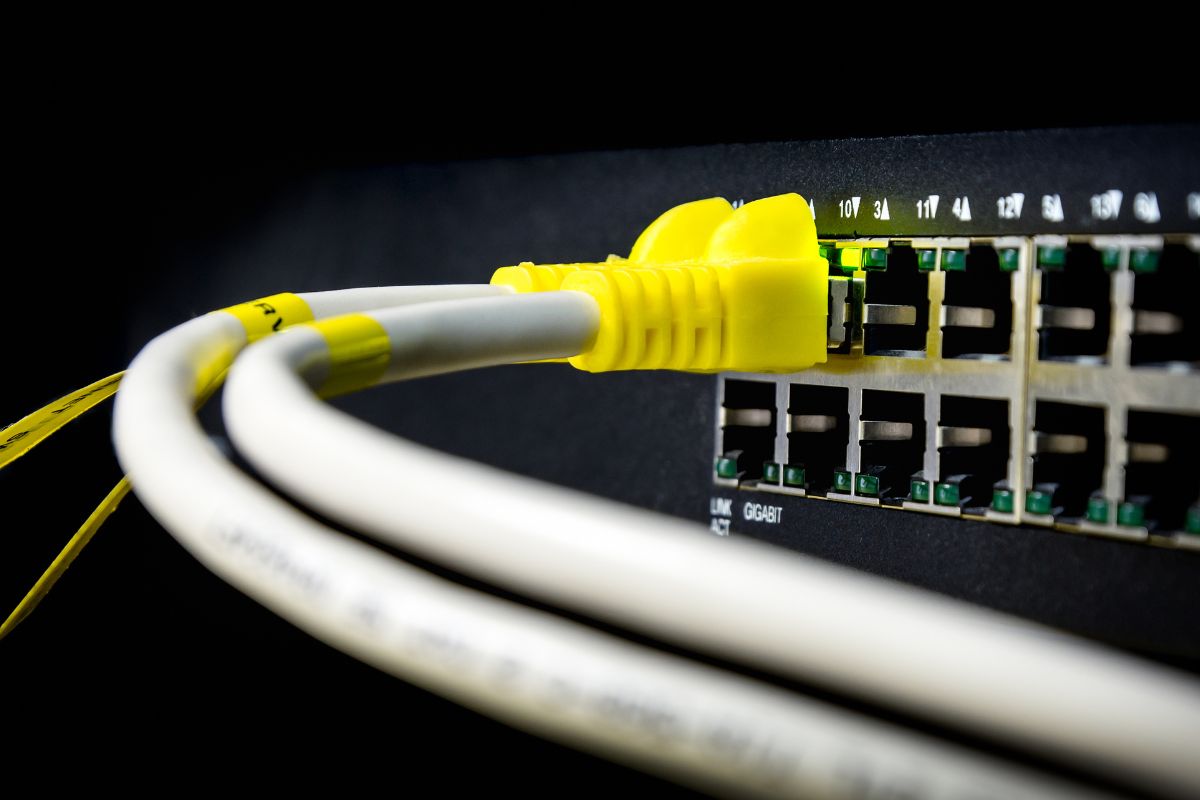
How Quality Data Cabling Improves Network Performance and Security
In today’s increasingly digital world, the strength and security of your network are more important than ever. Whether you’re running a small home office or managing a large enterprise, the foundation of your network—its cabling infrastructure—plays a critical role in how well everything performs. Yet, when it comes to network design, cabling often gets overlooked.
You might not think much about the cables running behind your walls or under your floors, but these essential components directly impact your network’s speed, reliability, and security. Investing in quality data cabling isn’t just about ensuring that devices are connected—it’s about creating a strong, future-proof foundation that supports your digital needs today and well into the future.
In this blog, we’ll walk you through why quality cabling is key to improving both network performance and security. We’ll show you how it affects everything from speed and reliability to protection against cyber threats. Let’s explore how the right cabling can help you build a network that’s not only fast but also secure and scalable for years to come.
The Role of Quality Data Cabling in Network Performance
When discussing network performance, we’re talking about the speed, reliability, and overall efficiency of data transmission. High-quality cabling plays a significant role in maintaining an optimal network performance. Here are six ways quality cabling contributes to a better-performing network:
1. Improved Data Transfer Speeds
High-quality cabling like Cat6 or Cat6a supports faster data transfer speeds. These cables can handle greater bandwidth, allowing your network to deliver faster performance, particularly for demanding applications such as video conferencing, streaming, and large data transfers. With faster data speeds, employees can work more efficiently, and customers experience quicker access to services or products.
2. Reduced Signal Loss
Inferior cabling can cause signal attenuation, where the strength of the signal degrades as it travels along the cable. Quality cables are designed to minimise this loss, ensuring that data reaches its destination intact without requiring additional signal boosters. This results in fewer interruptions and more reliable service, especially in long-distance networks or large-scale installations.
3. Support for Higher Bandwidth
Quality cables such as Cat6a or fiber-optic cables are capable of supporting greater bandwidth, which is critical in modern network setups. Higher bandwidth allows for more devices to be connected to the network without affecting speed or performance. Businesses benefit by being able to connect multiple high-demand devices simultaneously, supporting more complex applications without compromising performance.
4. Better Scalability
As businesses grow, their networks need to handle more traffic. High-quality cabling ensures that networks can scale easily by accommodating increasing data loads without significant degradation in performance. This future-proofing helps organisations avoid expensive overhauls, making it easier to adapt to growing bandwidth demands in the years ahead.
5. Minimised Latency
Latencies or delays in communication can be caused by signal interference and poor-quality cables. Premium cables reduce this latency, ensuring that there’s minimal delay in data transfer—critical for applications like VoIP, online gaming, and real-time collaboration. By reducing latency, businesses can ensure that communication and collaboration tools work smoothly without interruptions.
6. Support for Emerging Technologies
Quality cabling is designed to support emerging technologies like 10Gb Ethernet or even 40Gb Ethernet, which require a higher level of data transmission capabilities. This makes it easier to adopt the latest tech innovations without having to worry about upgrading the cabling system frequently. With the ability to handle future technologies, businesses remain competitive and capable of adopting cutting-edge solutions as they become available.
How Quality Cabling Enhances Network Security
Security is paramount in today’s networked world. Quality data cabling can help protect your network from a variety of security threats. Let’s explore how investing in high-quality cables improves network security:
1. Reduced Interference & Data Corruption
Shielded cables (STP or FTP cables) help protect against electromagnetic interference (EMI), which can cause data corruption or loss. By using high-quality, shielded cables, you ensure that your network data remains intact and secure. This is especially crucial in environments where sensitive information is transmitted, such as financial institutions or healthcare facilities.
2. Prevention of Data Interception
Unshielded cables or improperly installed networks can be prone to data interception. Using high-quality cables reduces the risk of hackers tapping into your network and intercepting sensitive data, ensuring your data remains secure. By preventing unauthorised access, businesses can avoid potentially damaging security breaches and costly data leaks.
3. Physical Security
Properly installed cabling systems that are securely routed and managed can prevent unauthorised access to the network. A well-organised, properly installed cable infrastructure is harder to tamper with, providing an additional layer of physical security to the network. This physical protection also helps prevent accidental damage to cables that could cause service interruptions.
4. Less Vulnerability to Eavesdropping
Quality cabling can also limit the ability of external parties to tap into network traffic. With cables that are properly shielded against EMI and with secure installation practices, it becomes more challenging for hackers to access and eavesdrop on network traffic. This helps safeguard confidential communication and private data being transmitted across the network.
5. Reduced Risk of Downtime
Network outages due to damaged or poor-quality cables can leave your network vulnerable to security breaches. By ensuring that the cables used are durable and reliable, businesses can minimise the risk of downtime, which in turn, helps maintain a secure operating environment. Continuous connectivity reduces the risk of missed security alerts or failed updates that could leave the network exposed.
6. Better Encryption Support
High-quality cables help maintain stable connections, which are essential when running encrypted data over the network. By reducing the risk of connection interruptions or data integrity issues, high-quality cables ensure that encryption technologies function correctly and keep data secure. With encryption being a critical part of cybersecurity, having stable connections is vital for protecting sensitive information.
The Importance of Proper Installation and Maintenance
Even the best quality cables will only perform optimally when installed correctly and maintained regularly. Proper installation and upkeep are essential to maintaining the performance and security of your network. Here are six ways installation and maintenance impact the network:
1. Optimised Performance Through Proper Installation
Professional installation ensures that cables are laid out efficiently and according to industry best practices. For instance, maintaining the right cable lengths, avoiding tight bends, and ensuring correct routing can prevent signal degradation, improving the overall performance of the network. Well-planned installations also make troubleshooting and future upgrades easier.
2. Reduced Risk of Physical Damage
Cables that are improperly installed or poorly maintained can suffer from wear and tear. Regular inspections and careful management reduce the likelihood of physical damage to cables, such as cuts or frays, which could lead to downtime or security breaches. By proactively addressing maintenance, businesses avoid costly repairs and interruptions to service.
3. Compliance with Standards
Following recognised industry standards (such as the TIA/EIA-568 standard) during installation ensures that the cabling system performs at its peak and is compatible with various devices and equipment. Compliant installation improves both performance and security. It ensures that your system is up to code and provides consistent performance while also facilitating troubleshooting when issues arise.
4. Easier Troubleshooting
When cabling is organised and properly documented, it is much easier to diagnose and fix network issues. A well-maintained cabling system allows technicians to quickly identify faulty cables, ensuring that problems are resolved without unnecessary delays. Proper labeling and management also make it simpler to replace or upgrade cables in the future.
5. Capacity for Future Upgrades
Regular maintenance and careful installation allow for easy upgrades to the network infrastructure. When cabling is installed with future expansion in mind, it becomes easier to scale the network and incorporate higher-speed connections as technologies evolve. This forward-thinking approach helps businesses avoid costly system overhauls down the road.
6. Increased Longevity of Cables
Properly maintained cables last longer, reducing the need for frequent replacements. Regular inspections help identify potential issues before they result in costly repairs or network disruptions. This extends the lifespan of the cabling infrastructure and maximises the return on investment, allowing businesses to get the most out of their initial installation.
Reducing Costs Through High-Quality Cabling
While the initial cost of high-quality cabling may seem higher than lower-grade alternatives, the long-term benefits far outweigh these initial expenses. Here’s how quality cabling can help you save money over time:
1. Reduced Maintenance Costs
Lower-quality cables may require frequent repairs or replacements, increasing maintenance costs. High-quality cables, on the other hand, are more durable and reliable, leading to fewer repairs and replacements over time. This results in significant cost savings over the lifetime of the installation, allowing businesses to allocate resources to other areas.
2. Minimised Downtime
Network outages caused by poor cabling can result in costly downtime. Investing in reliable, high-quality cables helps prevent these disruptions and ensures business continuity, ultimately saving money by keeping operations running smoothly. With fewer service interruptions, employees can remain productive, and customers experience uninterrupted service.
3. Lower Energy Consumption
Quality cables are more efficient at transmitting data, which can reduce the amount of power needed to maintain the network. This can lead to lower electricity costs and a smaller carbon footprint over time. Businesses can make a positive environmental impact while reducing their operational expenses.
4. Avoiding Expensive Upgrades
When your cabling system can support higher speeds and bandwidths, you won’t need to constantly upgrade your network equipment to accommodate faster technologies. This can save you money on unnecessary hardware upgrades and extend the life of your network. Avoiding frequent upgrades reduces both capital expenditures and operational costs.
5. Increased Network Efficiency
High-quality cables provide stable, uninterrupted connections, which leads to greater efficiency. This means less time spent on troubleshooting, fewer errors, and improved productivity, which translates to cost savings for the business. A more efficient network enables teams to collaborate effectively and achieve organisational goals faster.
6. Lower Risk of Data Breaches
Investing in quality cabling improves network security, which helps prevent costly data breaches. A secure network reduces the risk of financial losses related to hacking, fraud, or legal ramifications of data theft. By preventing security incidents, businesses can avoid expensive lawsuits, fines, and damage to their reputation.
Why Choose IT Support Guy For Data Cabling in Sydney
When it comes to data cabling in Sydney, IT Support Guy stands out as a trusted provider offering top-notch services tailored to your specific needs. With years of experience in the industry, their team of certified experts ensures that every cabling installation is done to the highest standards, guaranteeing both optimal performance and reliability. They take the time to understand your business requirements, offering scalable and future-proof solutions that can support growing demands. Whether you’re setting up a new network or upgrading an existing one, IT Support Guy prioritizes security, efficiency, and cost-effectiveness, delivering professional service with a focus on customer satisfaction. Choosing them means you’re partnering with a reliable, experienced team committed to providing seamless and high-quality data cabling solutions in Sydney.
Conclusion
In summary, quality data cabling plays an essential role in improving both the performance and security of your network. Whether it’s enabling faster data transfer, supporting higher bandwidth, ensuring network scalability, or protecting against cyber threats, investing in high-quality cabling ensures a robust, reliable, and secure infrastructure.
The importance of quality cabling cannot be understated when building a network, whether for a small office or a large enterprise. By prioritising proper installation and regular maintenance, you can enhance the efficiency, longevity, and security of your network, making it better equipped to handle the growing demands of modern-day technology.
